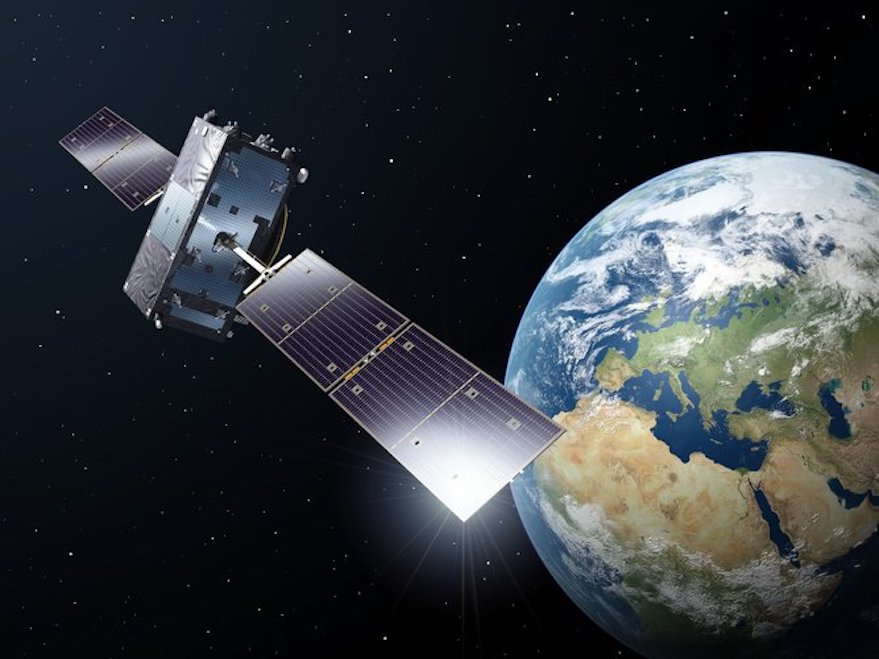WASHINGTON — The European Space Agency is preparing to select two companies to build the second generation of Galileo navigation satellites under contracts to be signed in early 2021.
The ESA-led competition, arranged on behalf of the European Commission, pits rising German manufacturer OHB against European heavyweights Thales Alenia Space and Airbus Defense and Space, Paul Verhoef, ESA director of navigation, told SpaceNews by email. “The intention is to retain two suppliers in a dual-source mode providing these satellites,” he said.
ESA will initially order two satellites apiece from the selected providers. Follow-on contracts will cover the next 12 satellites in a constellation that will eventually consist of 24 active satellites and up to six spares.
OHB, once a novice in satellite manufacturing, now finds itself in the role of the incumbent, having built 22 of the 26 Galileo satellites in orbit. Airbus and Thales Alenia Space Italy built the first four satellites, which were used to validate the concept for the larger constellation.
OHB is building the final 12 Galileo first-generation satellites under what ESA calls “Batch 3,” that will sustain the constellation until the second-generation satellites are in orbit. The first two of those 12 are expected to launch on an Arianespace Soyuz in 2021.
Executives from OHB said Aug. 11 that they are optimistic ESA will select the company to build second-generation Galileo satellites.
“We see the probability to win, to be one of the two contractors involved in the dual sourcing, significantly above 50%,” Lutz Bertling, OHB chief strategy and development officer, said during an Aug. 11 earnings call. “It’s very unlikely that somebody with such a heritage competing with two other companies that have zero heritage would not be selected.”
OHB bested an Airbus and Thales Alenia Space consortium in 2011 to build the Galileo first-generation constellation, and has held its position as the prime contractor for the satellites ever since.
Bertling said that the Galileo second-generation satellites will be around 2,400 kilograms, roughly three and a half times the size of the current satellites. Galileo second generation will be more complex and technologically superior, meaning OHB still expects to see a revenue increase even if it has to split manufacturing with a competitor, he said.
Thales Alenia Space and Airbus Defence and Space both helped build the ground segment for Galileo, giving them familiarity with the constellation.
Philippe Pham, Airbus head of Earth observation, navigation and science, told SpaceNews the second-generation Galileo satellites will comprise a “significantly different system” compared to the first generation, with upgraded technologies that Airbus is experienced in providing.
“It brings brand new capabilities with the latest technologies in payload processing, beam forming networks, active antennas and electric propulsion on board a larger and significantly more capable platform,” Pham said by email. “Airbus has expertise in all these areas, with qualified products and proven heritage in managing large, complex space systems — all of which is essential to be seen as a serious contender and demonstrate compliance with the ambitious launch schedule before end 2024.”
Airbus is preparing a competitive bid that “very few can rival,” he said.
Thales Alenia Space says it will also be competitive. Martin Van Schaik, senior vice president of sales and marketing at Thales Alenia Space, said the company will leverage its experience with Galileo, the European Geostationary Navigation Overlay Service that optimises Galileo signals for aviation, and with other operational constellations when competing to build the second-generation satellites.
“Thales Alenia Space has all the assets to match Galileo 2nd generation requirements,” he said by email.
ESA’s Verhoef said the agency had previously intended to procure a “transition” batch of upgraded Galileo satellites that would have served as a gapfiller between generations, but ultimately chose to go straight from one generation to the next and spread out the launches for the remaining 12 first-generation satellites OHB is still building.
